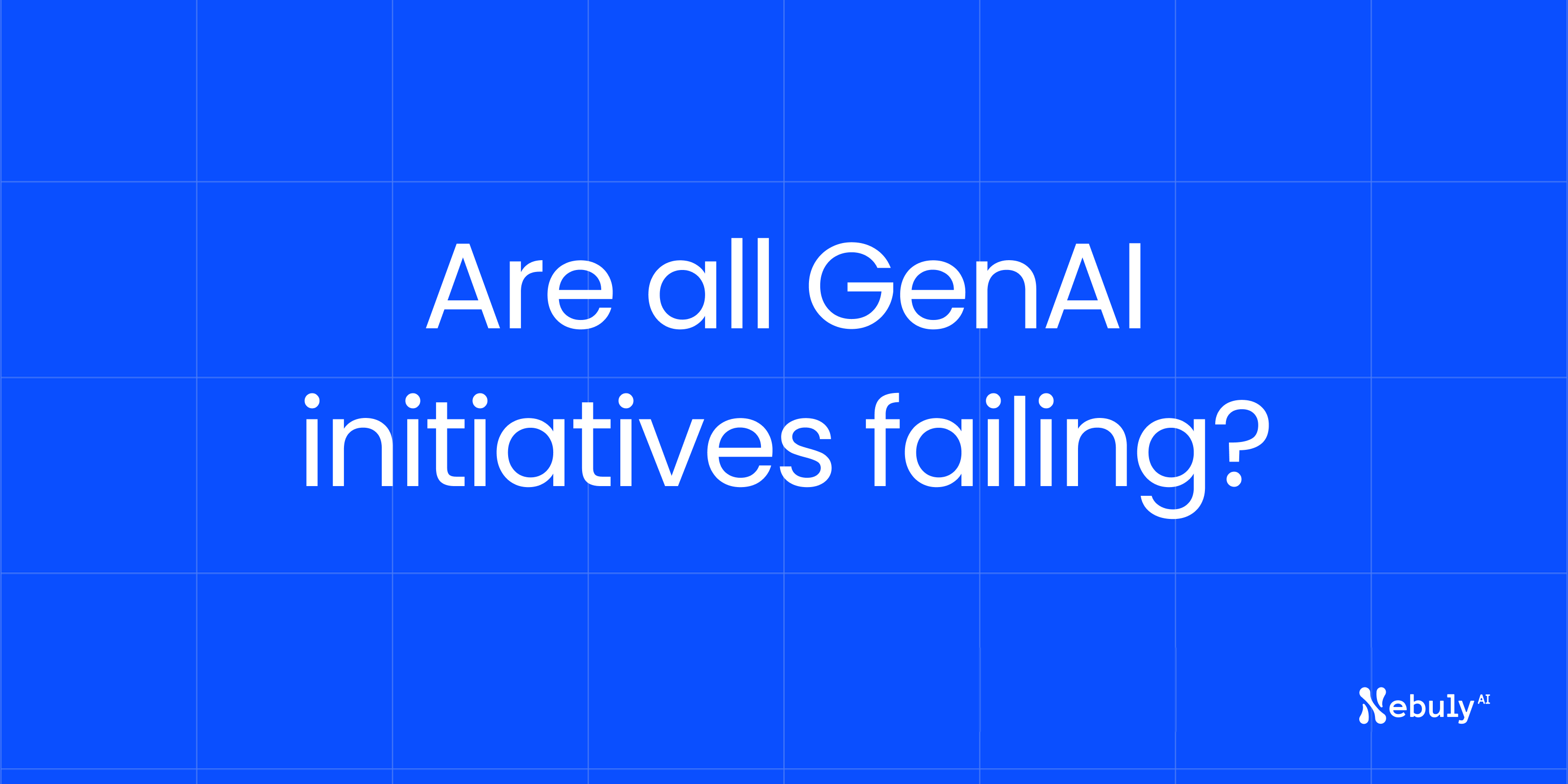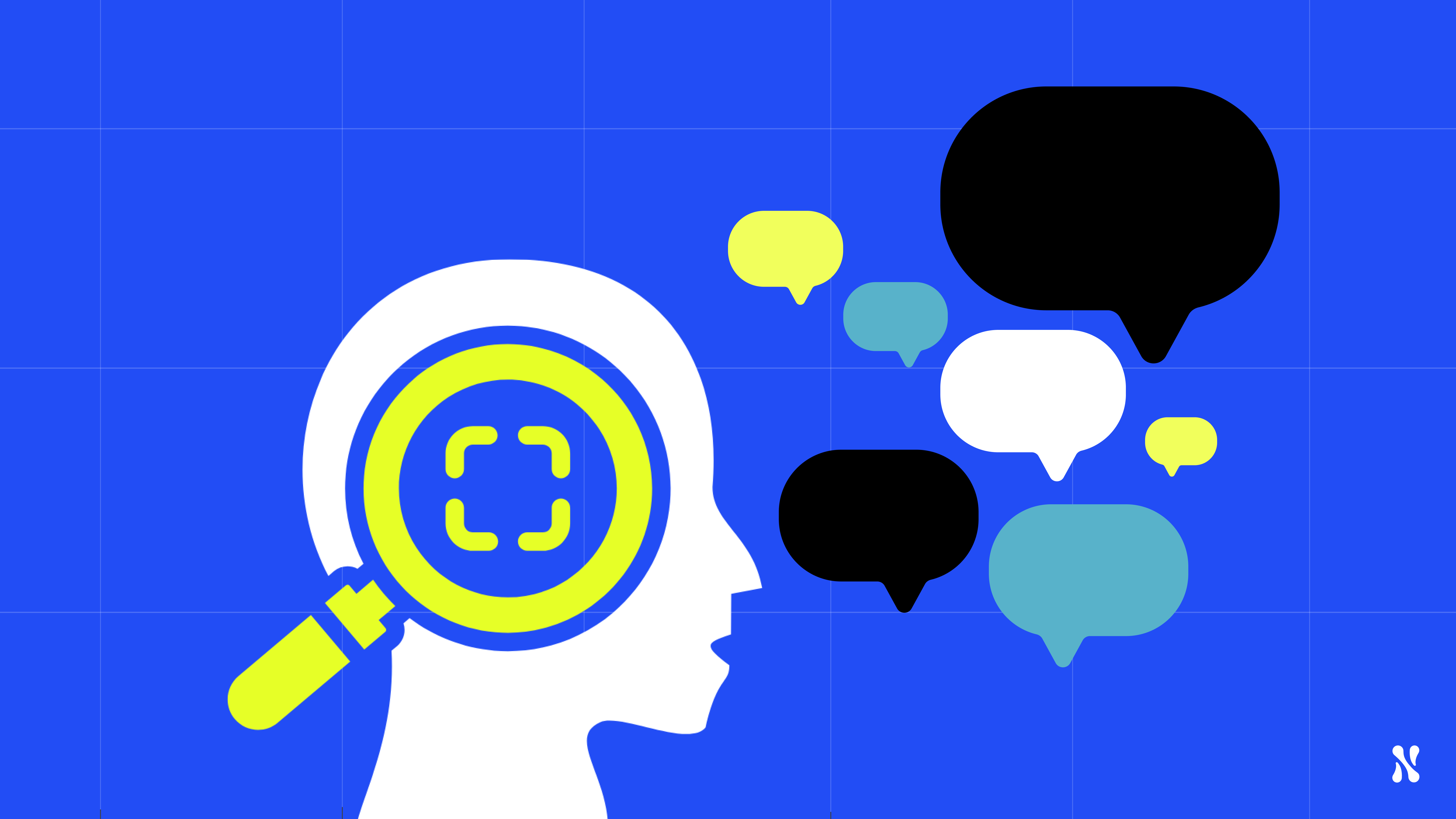We keep seeing headlines about AI products failing or adoption stalling. MIT calls it The AI Divide.
The truth is, these failures rarely come from broken models. They happen because teams launch GenAI features without understanding how people will use them.
When an assistant gives an authoritative answer, users tend to trust it. If it’s wrong, they often don’t notice, or they quietly give up. The AI may be technically fine, but the user experience is broken.
The real issue: overlooking people
AI projects don’t usually fail because the technology stops working. They fail because product teams didn’t account for human behavior.
Studies of stalled deployments show that the biggest blockers aren’t accuracy or speed. They’re the gaps in how humans and AI interact.
When users get frustrated, they walk away. Most won’t complain. They just stop using the tool.
Many AI assistants also lack memory or learning from feedback. Every session feels like Groundhog Day. Users repeat themselves, and the AI repeats mistakes. That’s enough to kill adoption, no matter how strong the model is.
What it looks like in practice
A global manufacturer, rolled out dozens of internal copilots. At first, they relied on user interviews and surveys. That wasn’t scalable. Feedback was sparse, and leaders had little visibility into whether the copilots were useful.
So they added the missing layer to their tech stack: LLM user analytics. Suddenly they could see every query and response in real time.
They discovered which departments embraced the tools and which ignored them. They found that some bots failed because they weren’t connected to key systems. And they acted fast, adding integrations, adjusting prompts, and improving training.
The impact: 100× more feedback without surveys, faster iteration, and growing trust from employees. What started as scattered pilots became a widely adopted suite of assistants.
A top global bank saw the same pattern. Early deployments revealed issues like employees sharing sensitive data or receiving incorrect answers. Instead of ignoring it, the bank monitored usage closely.
They tracked thousands of interactions, flagged risky prompts in real time, and corrected hallucinated answers before trust eroded. Employees knew someone was “watching the AI’s back.” Adoption grew because the system evolved with their needs.
Why system metrics aren’t enough
These stories point to one conclusion: AI failures are usually human blind spots, not technical ones.
Most teams still focus on system metrics like uptime, latency, or token costs. These matter, but they don’t tell you if users are succeeding.
It’s common to see an AI that’s 99.9% available and error-free… and still abandoned. A dashboard of green lights doesn’t mean people are getting value.
That’s why user analytics is the missing layer. Observability tells you the engine is running. User analytics shows you if the driver is getting where they need to go.
The metrics that matter
Instead of only asking “Was the system fast?”, you need to ask:
- Intent completion rate: Did the user get what they came for?
- Conversation depth: How many rephrases did it take before the AI got it right?
- Drop-off rate: At what point do people give up?
- Return rate: Do they come back, or was it a one-time try?
These are the signals that reveal whether the GenAI product is actually working for people. Without them, you’re guessing.
One enterprise discovered that 70% of reported “errors” weren’t bugs at all. Users were asking things in confusing ways, and the interface wasn’t guiding them. A small UX tweak such as adding prompt suggestions cut support tickets by a third. No model retraining needed.
Closing the loop
The companies that win with AI don’t stop at launch. They deploy, measure, learn, and adjust in a continuous loop.
This loop is the difference between projects that stall and those that thrive. Organizations with structured feedback cycles improve ten times faster than those without.
It also builds trust. When users see the AI getting better based on their behavior, they gain confidence. That drives more use, which creates more data to improve the experience. A flywheel effect takes hold.
People first, technology second
The lesson is simple: the human side of AI isn’t optional. It’s make-or-break.
AI leaders need to give as much weight to user behavior as to model performance. That means embedding user analytics into the stack from day one.
This is the gap Nebuly fills. We provide the user intelligence layer for LLMs — turning interactions into insight so companies can see where people succeed, where they struggle, and where trust breaks.
Every prompt is feedback. Capturing and acting on it is how enterprises move from flashy pilots to real adoption.
The takeaway
An AI product is only as good as the experience it provides. Success comes from closing the loop between humans and machines.
The companies that invest in this are already seeing their copilots, chatbots, and assistants thrive. Those that don’t will keep watching their projects stall — without knowing why.
The good news? It’s not too late to shift. Listen to your users. Learn from their behavior. Make user analytics a core part of your AI strategy. That’s how you turn AI failures into AI success stories. If you’d like to see how it works in practice, book a demo with us today.






